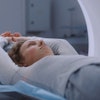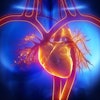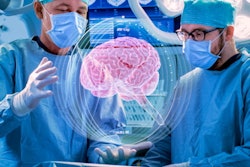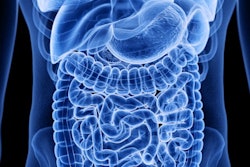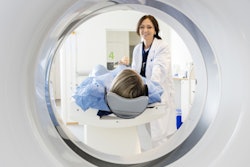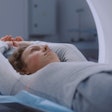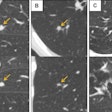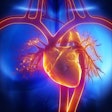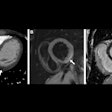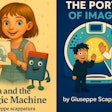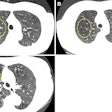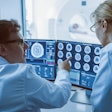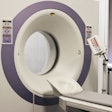A diffusion-based deep learning model can help glean bone microstructure data from low-resolution CT images of the proximal femur, a study published September 20 in Radiology: Artificial Intelligence has found.
"[Our model] may enable accurate measurements of bone structure and strength with a radiation dose on par with current clinical imaging protocols, improving the viability of clinical CT for assessing bone health," wrote Trevor Chan and Chamith Rjapakse, PhD, both of the University of Pennsylvania in Philadelphia.
Osteoporosis is typically diagnosed and assessed via dual-energy x-ray absorptiometry (DEXA). But this modality tends to have a low sensitivity for predicting bone fractures and acquires only low-resolution, 2D images. CT shows promise for the indication because it can provide information DEXA scans cannot, such as overall 3D structure, cortical bone density, and details about trabecular microstructures, data that can "improve the assessment of osteoporosis progression, estimation of bone strength, and prediction of bone fracture risk," the two authors explained.
Since CT imparts radiation and since tracking patients with osteoporosis may require multiple scans, finding a low-dose technique makes sense, Chan and Rajapakse wrote.
"Using computational super-resolution techniques can help sidestep constraints on high-resolution imaging imposed by radiation," they noted. "This entails acquiring lower-resolution images on standard, large-bore clinical scanners and inferring the necessary detailed information. In addition to improving the quality and safety of routine clinical CT assessment of bone health, these techniques have the potential to enable opportunistic assessment of osteoporosis from CT images acquired during unrelated imaging procedures."
The investigators conducted a study that included 26 micro-CT scans performed on cadaver femurs. They used these images to train and test a model that boosted image resolution three-fold, from 0.24 mm to 0.72 mm, in order to better visualize bone microstructure. Chan and Rajapakse then evaluated the model's performance using correlations between it and ground truth (that is, the original micro-CT scans) via intraclass correlation coefficients (ICCs, with 1 as reference).
The researchers reported that the model demonstrated high accuracy (mean ICC, 0.92 vs. an ICC of 0.83) and low bias (mean difference, 3.8% vs. 10%, respectively) across physiologic metrics.
"We achieved high accuracy across a range of visual, structural, and mechanical parameters when analyzing highly detailed regions of trabecular bone, … [and] structural values were consistent with those reported in prior literature," Chan and Rajapakse concluded.
The complete study can be found here.
